Par Vânia Barboni
Chronicles Chega Mais !
A passion of the French: the Musée d'Orsay
The French passion for museums is the result of school education in France. The program includes subjects that encourage the direct contact of children with the plastic arts. From the age of three, students are taken to various museums, appreciate the works and even know details of the lives of artists.
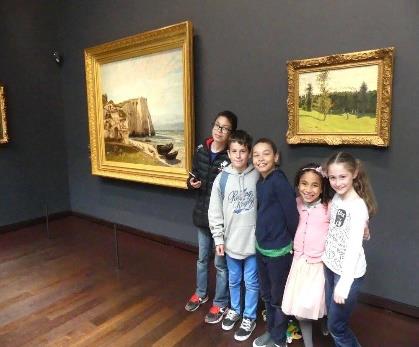
This is the case of the little ones in the Kohler family: Gabriela, Charles and Jacques. The youngest of the family,Gabriela Kohler, 12 years old, is a high-performance athlete and passionate about Claude Monet's work. According to Madame Kohler Vanusa, Gabriela's mother, her daughter has been studying the artist since she was four years old. And her favorite program is to go to the D'Orsay museum. "At the age of five, Gabi explained that the work The Woman in Green is Camille Monet, the artist's first wife.
I am delighted to see my children love the fine arts. "As a Brazilian, I never had access to culture in Brazil. And here in France they breathe culture since birth. I am deeply grateful" she explains with emotion.
A little bit about Claude Monet's life
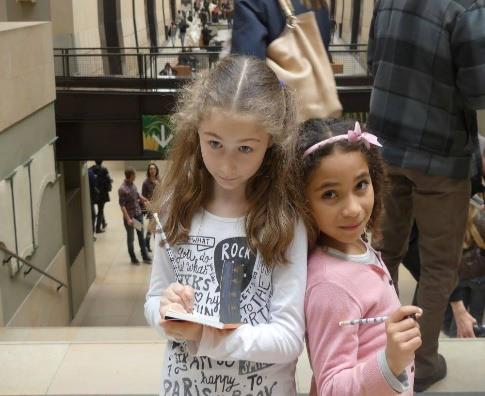
Armed with pads and pencils, Rebeca Deborda and Gabriela Kohler observe, take notes and share their teachings.
Gabriela shows that she knows details of the painter's love life, and even defends him.
The little girl tells that Monet, Camille Monet, Erneste Hoschedé, and Alice Hoschedé all lived together, but that they were just friends. And that Monet only married Alice only when Camille died. Video
Monet is the main representative of the Impressionist movement
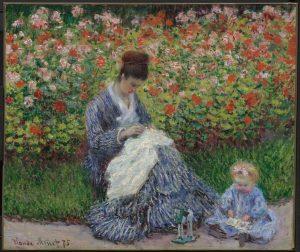
The artist always preferred painting outdoors, no matter the weather conditions, with to capture all the effects of nature. In the beginning of his career he was misunderstood and lacked the support of his family, resulting in financial difficulties for years. It was not until around the age of 40 that he began to sell his paintings, he died being rich a wealthy and established artist.
Camille Monet met the Hoschedé family in 1876, during a financial crisis. The collector and businessman Ernest Hoschedé bought several of his works. He hired him to paint the panels of the Rottembourg castle in Montgeron, where he set up a studio for the artist to work. Monet became a friend of the family. It took four months of work and time with Alice Hoschedé, Ernest's wife, which resulted in a lifelong passion.
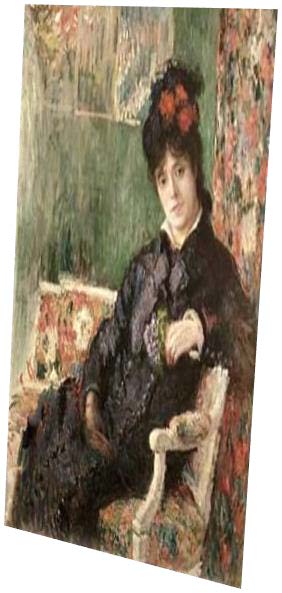
In 1878, Ernest declares bankruptcy and the castle is auctioned. The Monet and Hoschedé families, twelve people in total, decide to share a house in Vétheuil.
Then Camille dies, one year after Michel Monet's birth. And Alice Hoschedé decides to help Monet, taking care of his two sons (Jean and Michael), together with her own.
The businessman decides to return to Paris, but Alice prefers to stay so as not to alienate Monet from his children. This situation generates many rumors in town. Monet decides to move out of town to calm the situation.
Already in love with Alice, in 1883, Monet moved to Giverny, in Normandy. To ease their home sickness they always exchanged letters. Alice's husband died in 1891 and the following year the lovers made their marriage official.
The death of his great love on May 19, 1911, affected him deeply and that same night he wrote to his friend GustaveGeffroy, a French art historian and novelist: "My poor friend, it is over. My beloved companion died this morning at4:00. I am distraught, lost. Your friend. Claude Monet."
This letter is on display at the Monet Foundation in Giverny. The artist died at the age of 86 on December 5, 1926.
About the Musée d'Orsay
A must-see trip for art lovers.Going to the museum means being in the heart of Paris, since it is located along the Seine and opposite the Tuileries Gardens. The space that once housed the Orsay train station, where one of the most important museums in France is now located.
The museum building was founded in 1898 to be one of the stages of the famous 1900 Universal Exhibition in Paris. Its architecture is exuberant. In 1986, it ceased to be the Palais d'Orsay to become this world famous museum.
The works exhibited at the Musée d'Orsay come from the Louvre, the Musée d'Art Moderne de Paris and the Musée du Jeu de Paume.
A few words about the transformation of the building
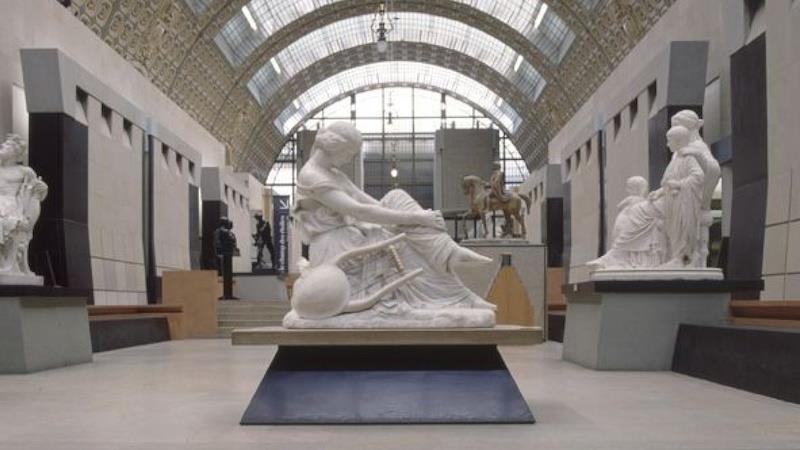
A station is transformed into a museum.
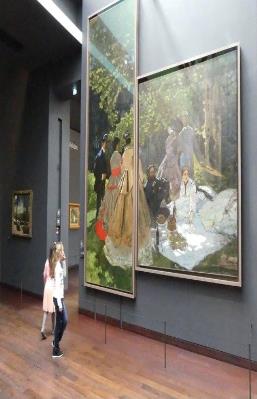
A pioneering project because it is the first time that industrial architecture has been renovated to house an important museum. This transformation into a museum is the work of three young architects from the A.C.T. Architecture: Pierre Colboc, Renaud Bardon and Jean-Paul Philippon, winners of the architectural competition.
Before being transformed into a museum, the site was a railway station, the Gare du Quai d'Orsay, built in 1871 in the former Palais d'Orsay, inaugurated before the Universal Exhibition of 1900.
The space lost its importance in mid-1939, and during World War II it was used as a post office and was closed in 1973. In 1977, the French government decided to turn it into a museum.
The famous Italian decorator Gae Aulenti took care of the interior design and designed the two loops that close the central wing, a solid architecture capable of imposing itself in the immense volume of the nave. The work lasted several years until the inauguration of the Musée d'Orsay on December 1, 1986 by François Mitterrand, President of the Republic.
Collection
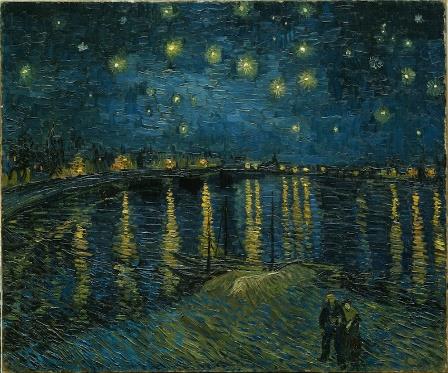
The Musée d'Orsay in Paris is one of the must-see places to visit in the City of Light, one of the main museums in France. The museum has an exquisite collection of works of art consisting of paintings and sculptures from the European Union era from 1848 to 1914.
Among them, renowned artists are exhibited: Degas, Van Gogh, Gustave Courbet, Manet, Monet, Delacroix, Matisse, Edvard Munch, Toulouse-Lautrec and others. Among the most famous works of art in the Musée d'Orsay are the self-portrait of Van Gogh, absinthe by Edgar Degas and Woman in Green by Claude Monet.
The program also includes events and temporary exhibitions, which can be viewed on the official website or on site. A tip is to visit the Musée d'Orsay on a Thursday, as it is open until 9.45 p.m. Warning ! Admission is free on the first Sunday of the month, so take advantage of it!
Sculptures

The museum's sculpture collection consists of more than 2,200 pieces, including the collections in storage. The central hallway of the museum is full of a diverse selection of sculptures, featuring renowned artists.
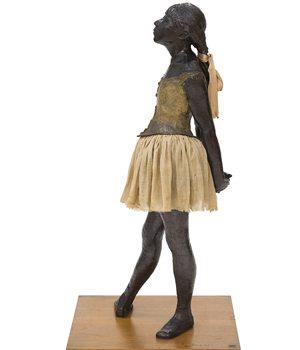
They illustrate the eclectic model in force in the middle of the 19th century, when the classicism of Eugène Guillaume's Memorial of the Gracques coexisted with the romanticism of François Rude, who created the relief of the Arc de Triomphe (1836) known as of La Marsellaise.
It is possible to admire treasures such as the famous 14-year-old Young Dancer (1881) by Edgar Degas, which was exhibited during the artist's lifetime. The little ballerina is Marie Genevieve Van Goethem, a young girl of modest origins and a ballet student at the Paris Opera.
Degas exhibited the work at the sixth impressionist exhibition in 1881. Sculpted in wax, it is presented in a display case. Most critics were shocked by the piece, which they found grotesque and was a model used in medical schools.
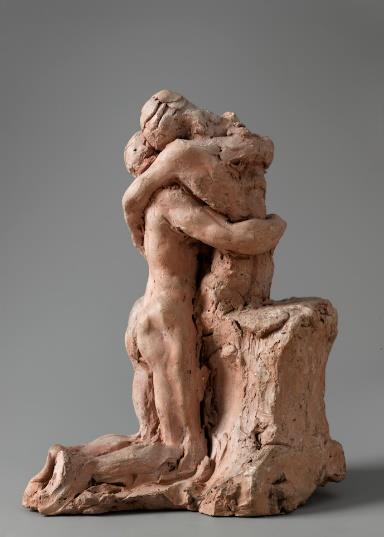
There you will find a beautiful series of 36 busts of members of Parliament (1832) - sculpted by Honoré Daumier. There are also works by the brilliant Jean-Baptiste Carpeaux, who made the first bronze: Count Ugolino (1862), representing a character of Dante.
There are sculptures by Auguste Rodin whose sensual and powerful work gives him a leading role among 19th century sculptors. The museum has several of his works, including the original mold by Balzac (1897).
There are works of his great love: Camille Claudel, who is represented by Maturity (1899-1903) and Study II for Sakountala (1886) among others.
The beginning of the century was marked by the work of Emile-Antoine Bourdelle and Aristede Maillol.
Tips for buying cheap tickets without queuing
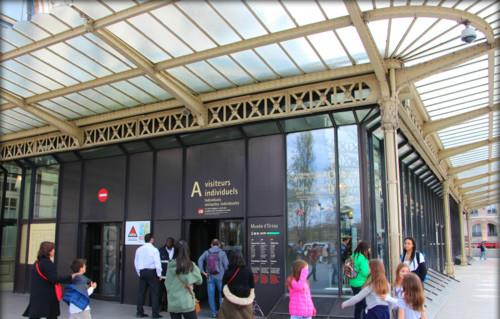
The best way is to buy tickets with special discounts and you save money and time in the queues at the ticket office, this way you travel with the tickets in hand.
A site I still use for tickets in Europe https://www.civitatis.com/pt/paris/?aid=3472&cmp=Paris, which sells tickets for the main tourist sites and circuits of Paris and all the cities of Europe. The site is also in Portuguese, and the good thing is that you buy all your tickets in one place, instead of buying tickets at each attraction's site. It's much more convenient!
Travel insurance is compulsory for Europe
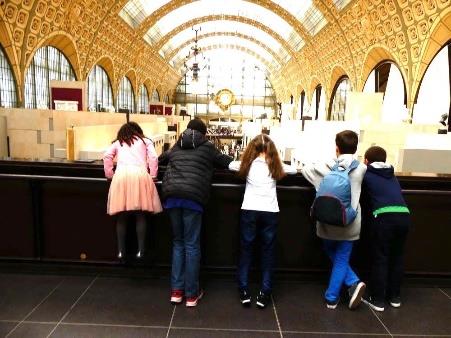
Now that you know a little more about the Musée d'Orsay in Paris, an important tip: don't forget to take out international travel insurance. It is mandatory for European countries.
Another tip is to visit Paris in summer or spring, because the days are longer and you get to enjoy them more! Everything is flowery and joyful. In winter it rains a lot and at ten in the morning it is still dark and it takes a lot of courage to go out for a walk in the cold and the rain. Despite everything, Paris is beautiful!
In the next edition, actor Jacques Kohler tells us about his passion for the Louvre.
Information
If you have any suggestions for topics and announcements for the Chega Mais column, please contact Vânia Barboni.
Service
Price : € 12 (normal ticket). Free (under 18, EU residents) between 18 and 25, on the first Sunday of each month).
Opening hours: 9.30am-6pm (Tuesday, Wednesday, Friday, Saturday and Sunday, last admission 5.15pm), 9.30am-9.45pm (Thursday, last admission 9.15pm).
Metro : Assemblée Nationale, Solférino.
Buy tickets: You can buy tickets here.
Official site : https://m.musee-orsay.fr/pt/informacao

Share